Mono Lake
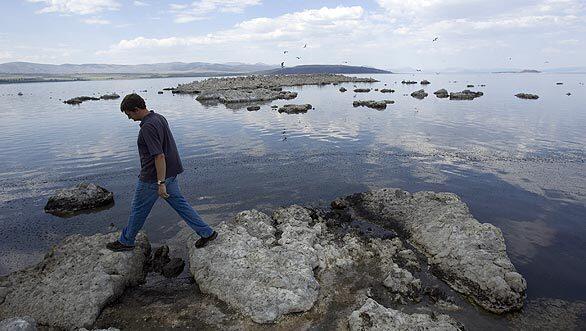
Mono Lake Committee Executive Director Geoffrey McQuilkin walks along the west shore of Mono Lake in the eastern Sierra in 2008. Thirty years ago the committee sounded the alarm about the imminent destruction of the nearly million-year-old lake because of excessive water diversions by the Los Angeles Department of Water and Power. Thanks to the committee’s successes over the years, says McQuilkin, the lake today is receiving the water it needs and Los Angeles is too, making Mono Lake a preeminent environmental success story. The committee and its 16,000 members are now trying to restore the lake and its tributary streams to health, protecting the lake from new threats and offering innovative educational programs for visitors and city youth. (Don Kelsen / Los Angeles Times)
In 2008, The Times visited Mono Lake to learn more about restoration efforts at the nearly million-year-old alkaline lake at the base of the jagged eastern escarpment of the Sierra Nevada. Water from four of Mono Lake’s five tributary streams has been going to Los Angeles since 1941.
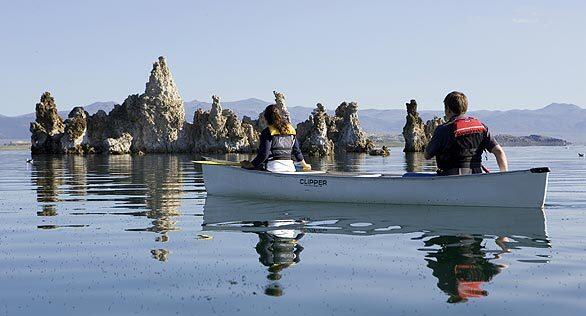
Geoffrey McQuilkin and Becky Clough, an outdoor instructor, explore the South Tufa area of Mono Lake in July 2008. Compare the water level against the tufa formations in this photo with that in the next photo, which shows the same formations in 1989. (Don Kelsen / Los Angeles Times)
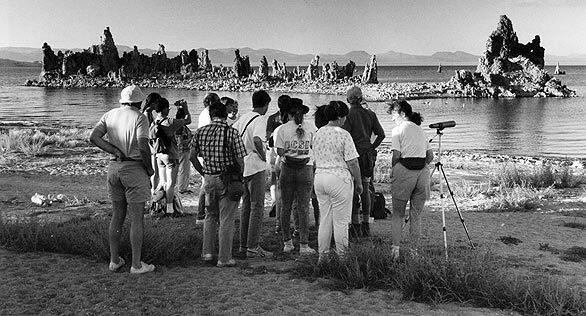
Members of a tour group view tufa formations in Mono Lake in the summer of 1989. This photo shows how much lower the water level was then, compared with the previous photo, taken in July 2008. (Larry Bessel / Los Angeles Times)
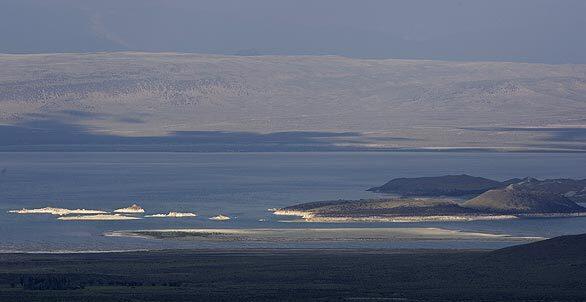
A view toward Mono Lake from Conway Summit shows Gaines Island, once connected to shore by a land bridge that allowed predators to threaten the Mono Lake California gull rookery. Negit Island and the edge of Paoha Island are behind Gaines Island, and the Cowtrack Mountains are in the distance. (Don Kelsen / Los Angeles Times)
Advertisement
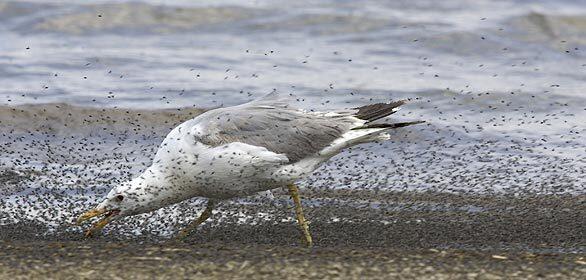
A California gull feasts on alkali flies on the west shore of Mono Lake. (Don Kelsen / Los Angeles Times)
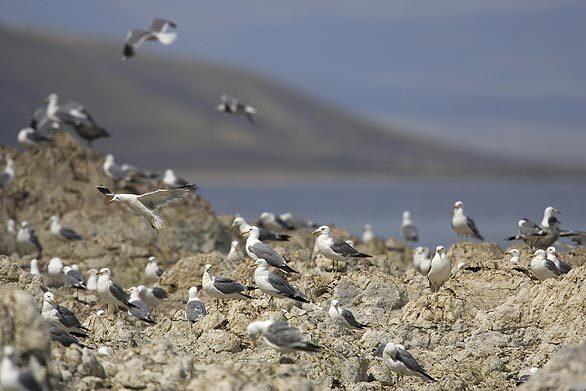
Gulls nest on a tufa island at Mono Lake. (Don Kelsen / Los Angeles Times)
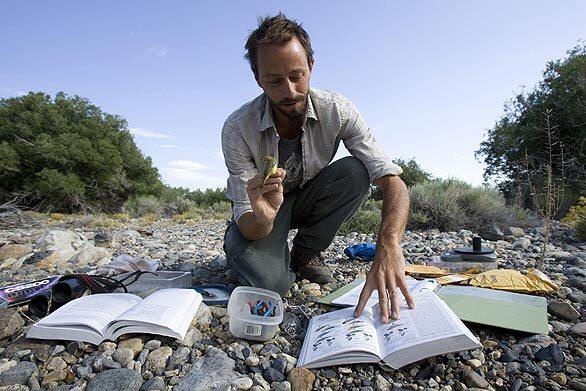
Biologist Chris McCreedy bands a yellow warbler at his outdoor lab in the restored bottomlands of Rush Creek near Mono Lake. (Don Kelsen / Los Angeles Times)
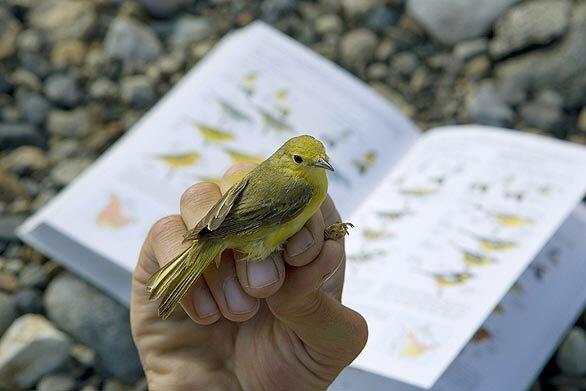
With a Sibley bird guide in the background for reference, biologist Chris McCreedy holds a yellow warbler. Some of California’s highest concentrations of yellow warblers live in the rejuvenated bottomland of Rush Creek, a major tributary of Mono Lake that for years was starved of water because of diversions to the Los Angeles area. It has made a comeback since the Mono Lake Committee succeeded in getting a reduction in the amount of tributary water diverted to Southern California. (Don Kelsen / Los Angeles Times)
Advertisement
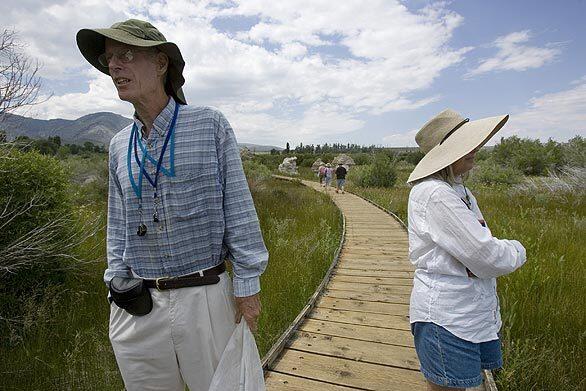
San Diego residents Gary and Paula Suttle look for damselflies from the State Reserve boardwalk at Mono Lake. (Don Kelsen / Los Angeles Times)






